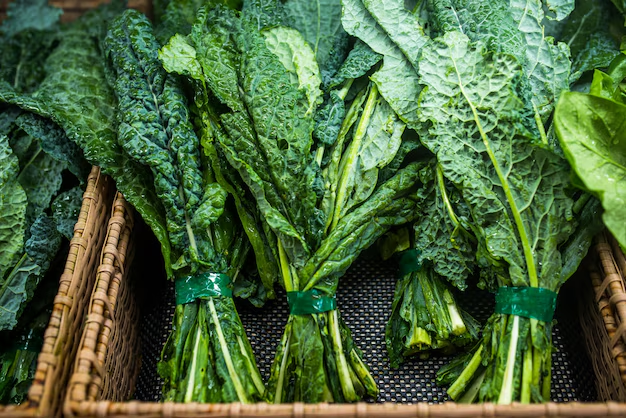Mastering Spinach Storage: How to Keep Your Greens Fresh in the Refrigerator 🌿
Spinach is a versatile and nutrient-rich leafy green favored by many for its delicious taste and numerous health benefits. However, it can quickly wilt and spoil if not stored properly. In this guide, we will explore how to keep spinach fresh for longer in your refrigerator, ensuring you get the most out of every leaf. Let's dive into practical tips and strategies to maintain the vibrant freshness of your spinach.
Why Spinach Wilts: Understanding the Challenge
The Science of Spoilage
Spinach, like many leafy greens, has a high water content. This makes it prone to wilting, especially when exposed to air and fluctuating temperatures. The delicate structure of spinach leaves also makes them susceptible to damage and spoilage, leading to the release of ethylene gas, which accelerates deterioration.
Common Mistakes to Avoid
- Excess Moisture: Moisture can encourage rot and lead to slimy leaves.
- Tight Packing: Compressing spinach can crush the leaves and promote wilting.
- Improper Temperature: Warm temperatures speed up spoilage, while extreme cold can damage the leaves.
Fresh Spinach: Selecting the Right Bunch
Choosing Quality Greens
- Check for Vibrancy: Choose spinach with bright, vibrant green leaves.
- Avoid Yellowing: Yellow or wilting leaves indicate the spinach is old.
- Inspect for Damage: Steer clear of spinach with bruises or slimy leaves.
Preparing Spinach for Storage
The Initial Wash: To Wash or Not to Wash?
- Before Storage: Washing spinach before storage can introduce unwanted moisture. It is usually recommended to wash spinach just before use.
- If You Must Wash: Dry the leaves thoroughly by spinning them in a salad spinner or patting with a towel.
Correct Cutting Techniques
- Only Remove Damaged Leaves: Avoid cutting fresh leaves. Instead, sort through and remove any damaged leaves to prevent the spread of spoilage.
The Ideal Spinach Storage Method
Utilizing the Crisper Drawer
The crisper drawer in your refrigerator is designed to maintain optimal humidity levels, making it an ideal place for storing spinach.
Place in a Dry Container: Line a plastic or glass container with paper towels to absorb excess moisture.
Avoid Overcrowding: Gently place the spinach in the container, ensuring it's loosely packed.
Close with a Lid: Seal the container with a lid to preserve humidity levels while preventing excess moisture.
Using Original Packaging
If your spinach came in a perforated bag, it can sometimes be best to keep it there. Those tiny holes help regulate airflow, reducing moisture build-up.
Regular Checks: Managing Freshness
Routine Inspections
Keep your spinach fresh by regularly checking it for signs of spoilage. Remove any deteriorating leaves immediately to prevent rot from spreading to the rest.
Spannungstips: What Experts Say
Many experts recommend consuming spinach within a week of purchase for optimal freshness and nutritional value. Nonetheless, with proper storage, it can often last a little longer.
Freezing Spinach: Extending Shelf Life
Freezing Basics
Sometimes, freezing spinach is a great option for long-term storage without significant loss of nutrients.
Blanching Process: Blanch the spinach briefly in boiling water, then transfer to an ice bath to halt cooking.
Dry Thoroughly: Ensure spinach is dry before freezing to prevent ice crystals.
Pack and Freeze: Place dried leaves in a freezer-safe bag, removing as much air as possible before sealing.
Defrosting Spinach
Frozen spinach is excellent for cooking and adding to smoothies but not for salads due to its wilted texture after defrosting.
Additional Tips for Enhanced Longevity
Tools and Accessories for Spinach Storage
Salad Spinners: Essential for removing excess water quickly and efficiently.
Glass Jars: Using glass jars instead of plastic can prevent the absorption of odors and stains.
Breathable Storage Bags: These help maintain optimal moisture levels while preserving freshness.
Environmental Factors: External Influences
- Temperature Control: Keeping your refrigerator set below 40°F can halt the growth of bacteria and decay.
- Air Circulation: Ensure good air circulation by avoiding overloading the fridge.
A Few Extra Storage Hacks
Paper Towel Trick
- Lay a Paper Towel: Inside the storage container, place a paper towel at both the top and then bottom of the spinach, absorbing any condensation and slowing spoilage.
Herb Keepers
Using an herb keeper or lettuce crisper can help regulate humidity levels, allowing for longer storage times.
Summary: Key Takeaways for Freshness 🌿
Here's a quick glance at the ultimate spinach storage strategies to keep your greens fresh:
- Select Wisely: Choose vibrant, non-damaged leaves.
- Store Smart: Loosely pack in a dry, covered container in the crisper drawer.
- Avoid Moisture: Use paper towels to absorb excess water.
- Routine Checks: Regularly inspect and remove any wilted or slimy leaves.
- Freeze Right: Blanch and dry thoroughly before freezing for long-term storage.
- Use Tools: A salad spinner and breathable storage bags are your best friends.
By following these guidelines, you can keep your spinach fresher for longer, reducing waste and maximizing your enjoyment of these leafy greens. Happy cooking, and enjoy your ultra-fresh spinach creations! 🌱
